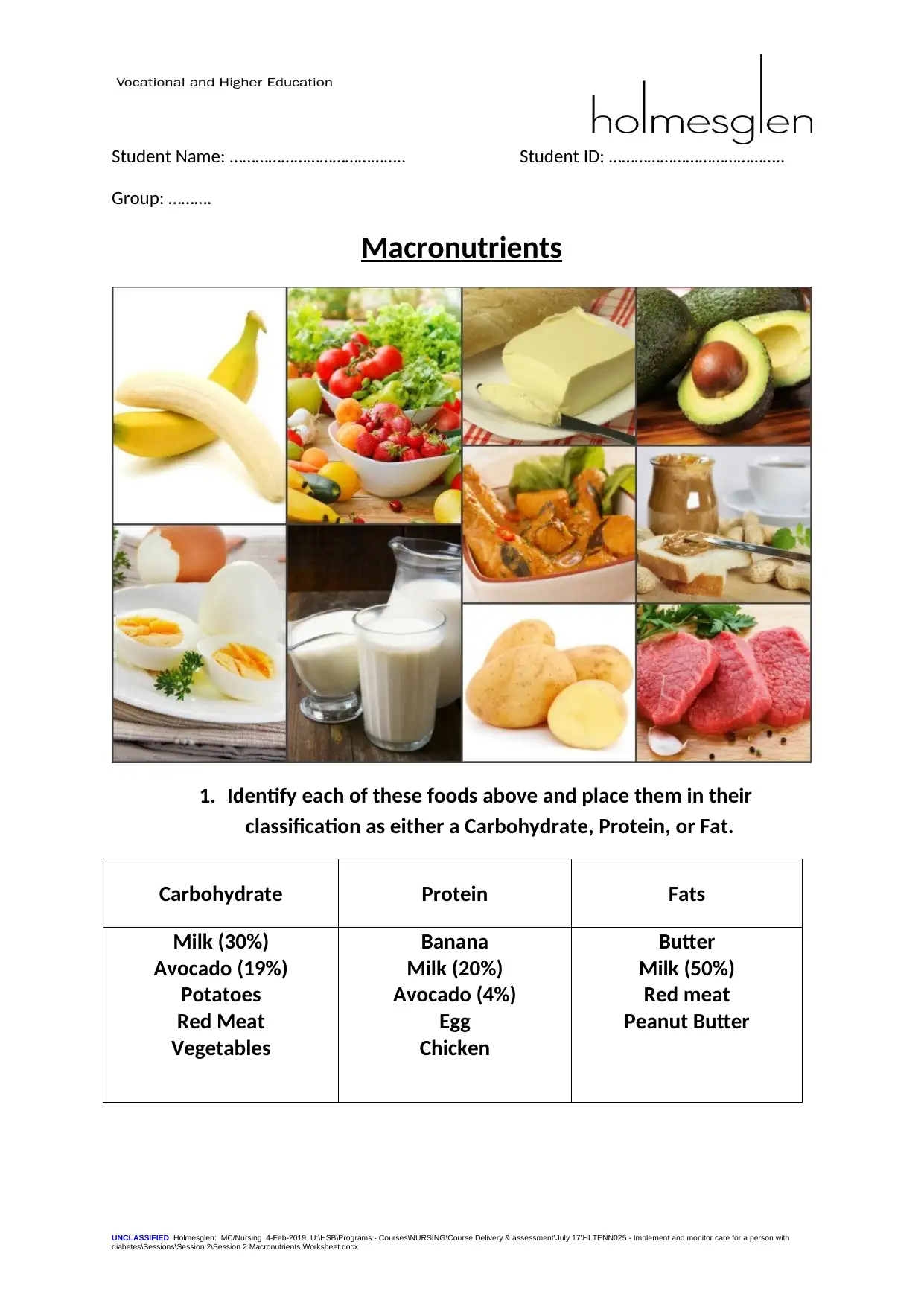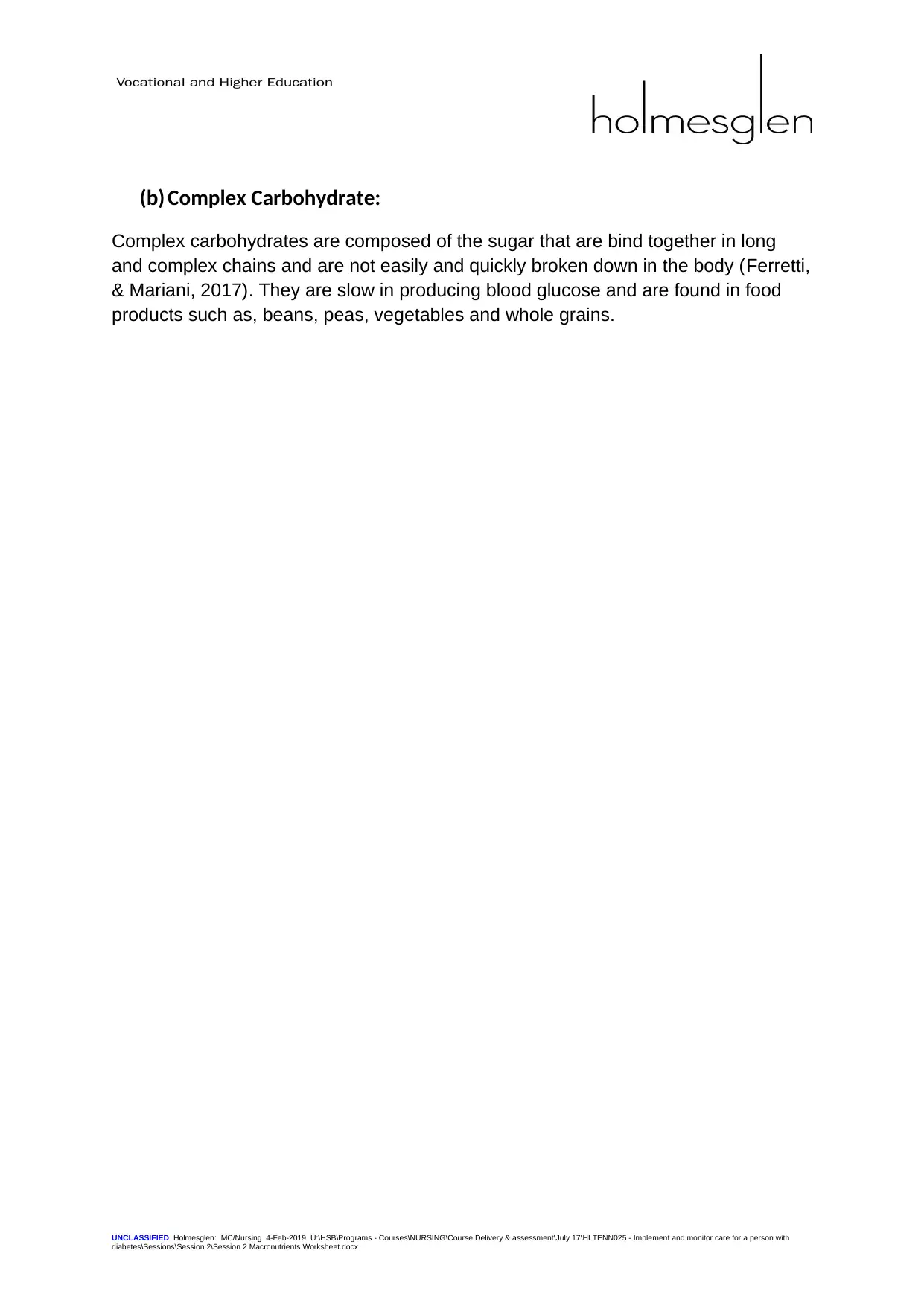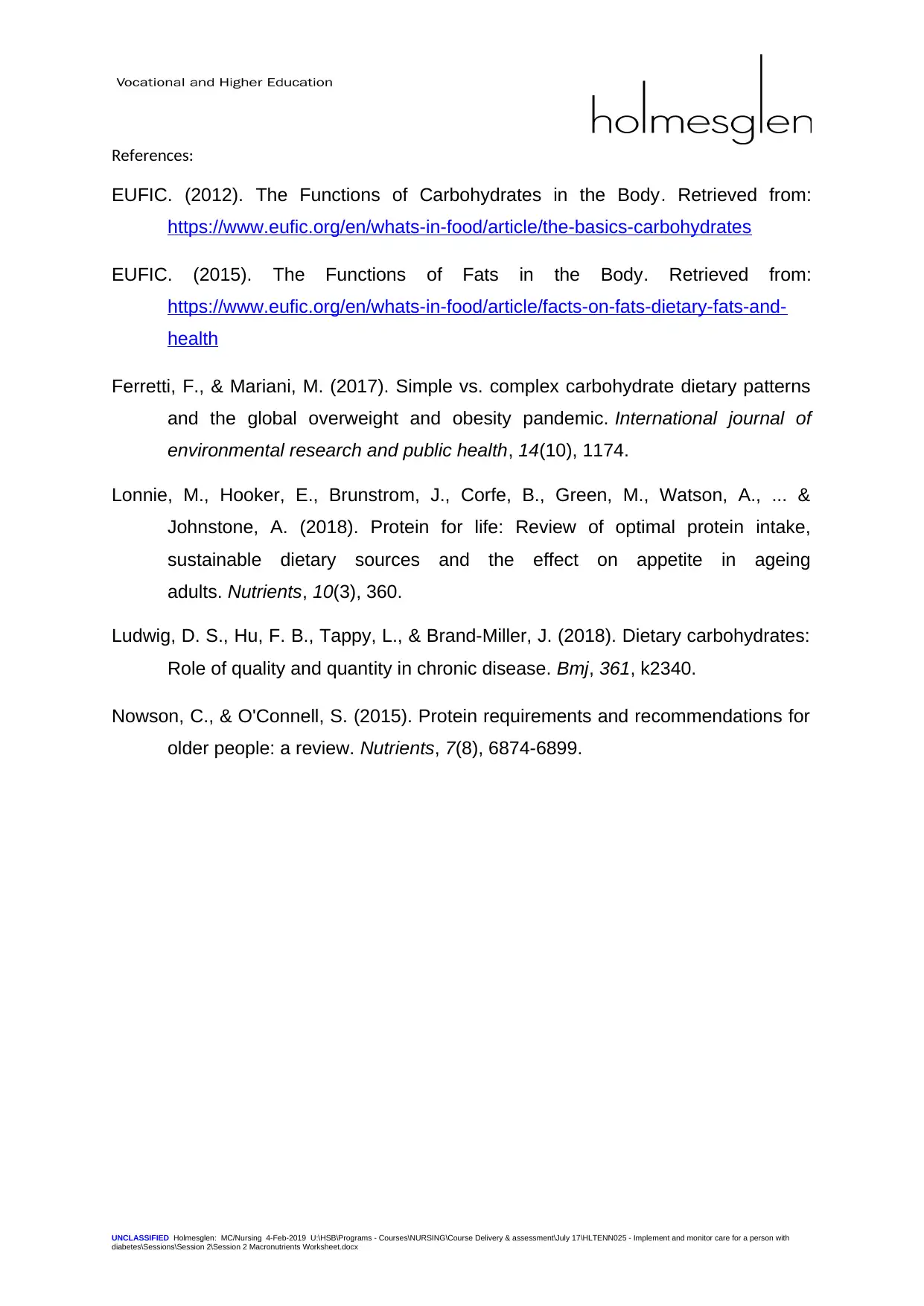HLTENN025: Macronutrients, Glycemic Control, and Diabetes Assignment
VerifiedAdded on 2022/10/14
|4
|720
|422
Homework Assignment
AI Summary
This assignment delves into the realm of macronutrients, meticulously examining carbohydrates, proteins, and fats. It begins by categorizing various food items into these classifications, followed by an in-depth exploration of the functions each macronutrient plays within the human body. The assignment then transitions to the specific context of diabetes management, emphasizing the critical role of carbohydrates in glycemic control. It differentiates between simple and complex carbohydrates, providing examples of each. Furthermore, the assignment incorporates questions on the glycemic index, factors affecting it, and the plate method for portion control, offering practical strategies for carbohydrate intake regulation. References from EUFIC, and other reputable sources are included to support the information.
1 out of 4











![[object Object]](/_next/static/media/star-bottom.7253800d.svg)